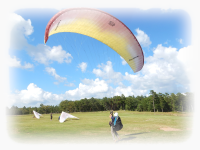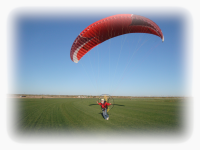Cylinder head O ring installation
by Had Robinson
Note: Removing the cylinder head is straightforward except for the cooling shroud. It is difficult because the cooling shroud sweeps around the cylinder exhaust port studs and we risk cracking the shroud if we try to force it over the studs. Why not remove the studs? That is also difficult because, if the engine was assembled correctly, the studs were installed with red threadlock which means they will not come out without heat (a torch). To get around this annoying factory problem, take a pair of sharp wire cutters or shears and cut the wings of the shroud off just enough so that the shroud clears the studs. The effect on the cooling system in negligible.
This O ring is subjected to very high pressures (over 1,000 psi) and the slightest leak will affect engine performance and possibly warp the head. This is why it is not a good idea to reuse O rings. Glopping RTV on a used O ring looks like it will seal the joint but will not. This is because a used O ring has microscopic deformities caused by slight differences in the sealing surfaces. The RTV has no effect stopping the extreme pressures inside the cylinder. Why suffer a loss of engine performance for a few $'s? RTV is not needed when replacing a new O ring nor is it used by the factory.
Gently tap the cylinder head on the sides with a dead-blow hammer once the nuts are removed. Do not use metal tools to pry the head off. Instead, work it off gently by hand.
- Clean the groove that holds the O ring with mineral spirits and a cotton swab. Use a toothpick to remove stuck particles.
It is not a good idea to use any metal object to clean the O ring grove. Carefully examine the O ring groove in the cylinder head. It must be absolutely free of particles.
- Gently stretch the O ring by pulling it around through your fingers for (30) seconds or so. Do not be in a hurry to do this. Place it in the groove in the cylinder head.
It should fall right in. If not, stretch it a bit more. Use a small amount of spray adhesive on the side of the O that goes in the groove to help hold it in position. Be certain that the O ring stays in the groove.
- Put the cylinder head with the O ring in place on the cylinder. As you lower the head down, keep a close eye on the O ring to be sure it is still in the groove.
- Install the head nuts. If you are unsure of the pattern of the spacers on the Top 80, refer to the specifications page, "Torque values, Cylinder head nuts".
For other motors, check their respective specifications page.
- Torque the cylinder head nuts in a cross pattern in stages to 9 Nm (Top 80) or the correct value specified for your motor. Wait 20 minutes and recheck the
torque. Wait another 20 minutes and check it again. The cylinder base gasket and the studs will all compress or stretch, respectively. Often,
as much as an additional quarter turn of the nuts will be required.
- It is a good idea to check the compression of the engine to be sure the O ring is in place and is completely sealing the cylinder.
Note: When replacing the cooling shroud, put copious amounts of RTV between the large washers on the cylinder head studs and shroud. This will help cut down the wear of the shroud at these points due to severe engine vibration. Do not forget to re-torque the cylinder head nuts after a few hours runtime.
![]()




